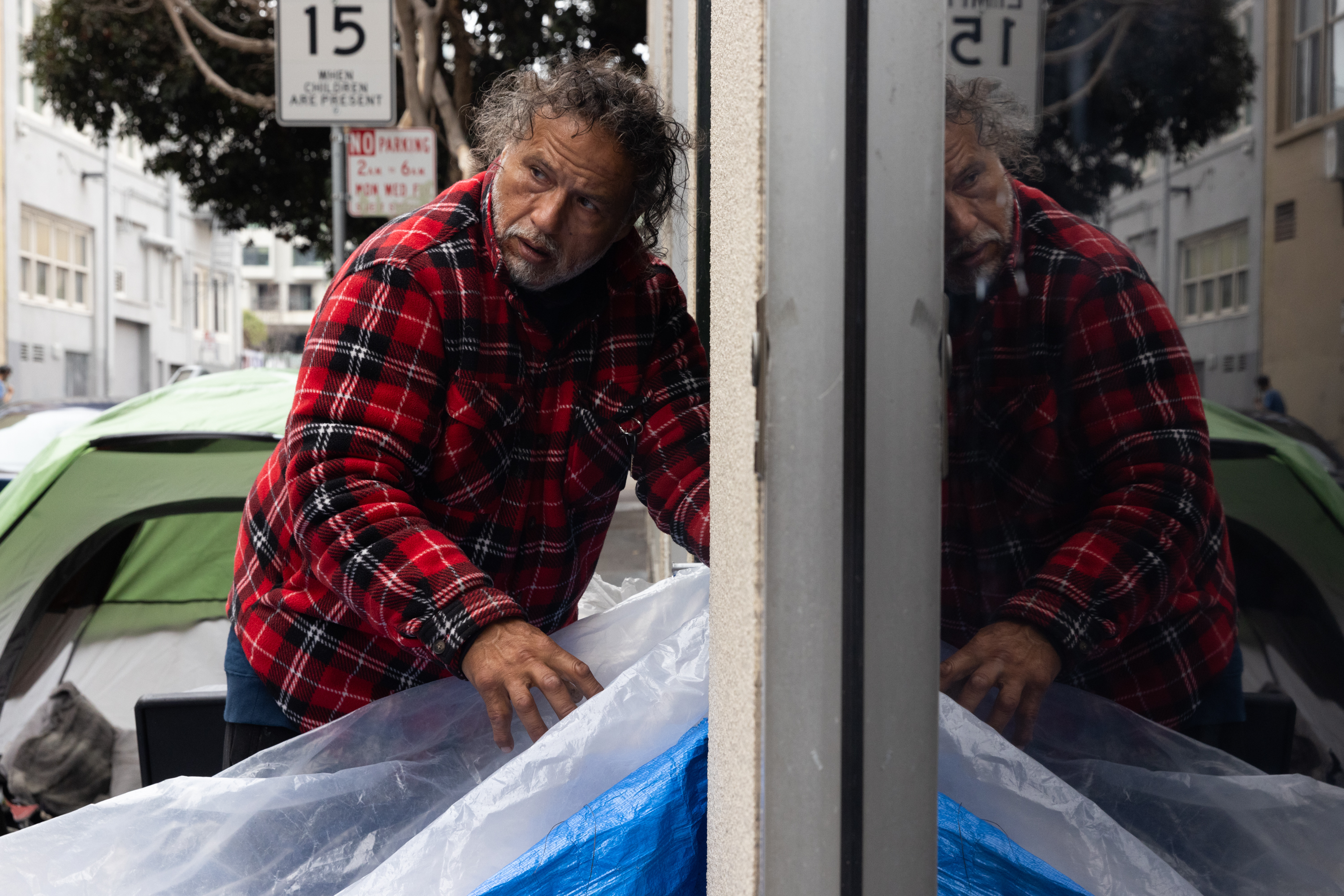As San Francisco geared up to host APEC last month, many residents noticed there were suddenly fewer homeless encampments in the Downtown area. But it was previously unclear how many tents and vehicle dwellings were removed as world leaders and global CEOs descended on the city for the weeklong summit.
Now, new data released by the city gives a sense of scale of just how many fewer people were visibly living on the streets.
A tent and vehicle count conducted by the Department of Emergency Management on Nov. 22 shows there was a decrease of 101 tents and 365 vehicle dwellings between July and November. That’s a 16% decrease in tents and a 35% drop in inhabited vehicles, such as recreational vehicles (RVs). The Asia-Pacific Economic Cooperation conference ran from Nov. 11 to Nov. 17 at the Moscone Center.
Public records show city officials prioritized encampment clearings in high-visibility areas such as Van Ness Avenue.
United Nations Plaza and the area around the Speaker Nancy Pelosi Federal Building also saw a reduction in the number of tents and drug activity.
Terry Asten Bennett, president of the Castro Merchants Association, told The Standard she noticed an uptick in unhoused people on her neighborhood’s streets.
Asten Bennett said such an influx is typical when the city hosts large events, such as APEC and Dreamforce, but the new faces typically disappear from the neighborhood shortly after.
“It’d be nice if city services came out and assisted the people who need help instead of just setting them loose on us,” Asten Bennett said. “They just disappeared back to wherever they came from.”
The city’s homelessness department said it didn’t add any shelter beds for the conference nor did it see an increase in placements.
However, the city opened its annual 30-bed winter shelter the day before APEC and commenced a 300-bed “inflation” of the city’s existing shelters in the following weeks.
In an emailed statement provided to The Standard on Monday, the Department of Emergency Management contended that the reduction in tents and vehicles wasn’t a result of APEC-related efforts. The department instead credited ongoing shelter placements, arrests of people for dealing and using drugs and new legal guidance issued in October that allowed police to enforce anti-camping laws in some cases.
“Improving street conditions are the result of numerous factors,” it said. “The City’s work to address homelessness is a priority 365 days per year and reductions in tents are the result of months of placements into shelter and housing.”
The number of visible encampments on the city’s streets peaked at the onset of the pandemic in April 2020, when the city tallied 1,108 tents. In October 2020, the city counted a record number of 1,335 vehicle dwellings, according to the quarterly count.
The city had seen a gradual increase in the number of homeless encampments this year, reaching 609 tents and 1,058 inhabited vehicles before the November count found a decrease.
Over 4,000 people sleep on the city’s streets on any given night, according to the most recent federally mandated “point-in-time” count.
Advocates for homeless people say the number of encampments doesn’t correspond with the number of people experiencing homelessness. In particular, homeless families are less likely to be captured in such counts as they may be “doubling up” on couches or in vehicles.
There were 417 people on the city’s shelter waitlist for single adults as of Monday afternoon.
Meanwhile, 238 homeless families were waiting to enter San Francisco’s family shelters, including 363 children and 323 adults, as of last Wednesday.
“[The data] seems to indicate widespread sweeps,” Christin Evans, a member of the Homelessness Oversight Commission, said of the tent count conducted after APEC. “The numbers were not surprising. What was surprising to me was we didn’t see a corresponding increase in shelter bed use.”
